As Americans, traveling to Cuba has long been a forbidden fruit that we’ve been yearning to taste. Did you know that Cuba is the only country in the whole world that the U.S. government has ever prohibited its citizens from visiting (at least prior to President Trump’s failed travel ban)? Shortly after the Cuban Missile Crisis, President Kennedy banned travel to Cuba and made financial and commercial transactions illegal for American citizens. Flash forward to Obama’s presidency for the “historic thaw” of relations between the U.S. and Cuba and an ease on travel restrictions, allowing Americans to visit for “people to people” exchanges. Now that it is no longer illegal to visit, we packed up our kids and brought my mom along for a fabulous family vacation in Havana and Varadero. We have been getting so many questions from friends and family about our visit to Cuba since it was off limits to Americans for half a century. Americans don’t know what to expect and are very curious about this formerly forbidden land. We wanted to make it there before the influx of American tourism causes it to change significantly and lose its charm of feeling like you’ve been transported back in time. Our week in Cuba has given us some insight on helpful things to know if you plan to visit. So here’s our list of 12 things to know if you want to visit Cuba, and we definitely think you should go! We all had a blast and know that we will be back again soon. Cuba is unlike any other place we’ve ever visited with its 1950’s classic cars, bright and colorful crumbling buildings, and lively streets with salsa music and delicious rum cocktails at every corner. We fell in love with this charismatic Carribean island and think you will too. Come prepared with our travel tips for Cuba and 10 things you must do in Cuba.
1. You can fly directly from the U.S. To Cuba now and don’t need a pre-approved license anymore, although travel strictly for tourism is prohibited. For example, you aren’t supposed to go there and spend your whole visit at an all-inclusive beach resort. There are 12 broadly defined categories of authorized travel to Cuba for Americans, which include family visits, official government business, journalism, professional research and meetings, educational activities, religious activities, public performances/workshops/competitions, support for the Cuban people, humanitarian projects, certain exportation transactions, transmission of information, and activities of private foundations. We were prepared to explain the reasons for our visit at immigration as a cultural exchange but no one even asked us why we were visiting Cuba. It was so much easier than we anticipated. You will have to fill out a visa application at the airport or on the flight, which your airline will provide to you at no cost since it is now included in the price of your ticket (at least with Southwest Airlines). You will need the visas again when you leave the country, so don’t lose them or you will be charged $50. We flew Southwest Airlines from Baltimore’s BWI to Ft. Lauderdale, FL and then it was a quick 45 minute flight to Havana. Piece of cake! As savvy travel hackers who like to fly for free or on the cheap, we booked all of our flights using Southwest points and our kids flew free as our companions, which means we only paid taxes ($52 per person). What a bargain! To learn how we earned the Southwest Companion passes, read our blog post explaining the process and its benefits. Another helpful tidbit about flying to Cuba- we heard that it’s a good idea to plastic wrap your checked luggage so that nothing is stolen in the airport in Cuba. We didn’t hear this tip until after our trip but thankfully nothing was stolen from our luggage in Cuba. On that note, we’re still waiting on Turkish Airlines to reimburse us for our drone and other electronics stolen from our luggage on our trip to Cameroon earlier this year. What a nightmare!
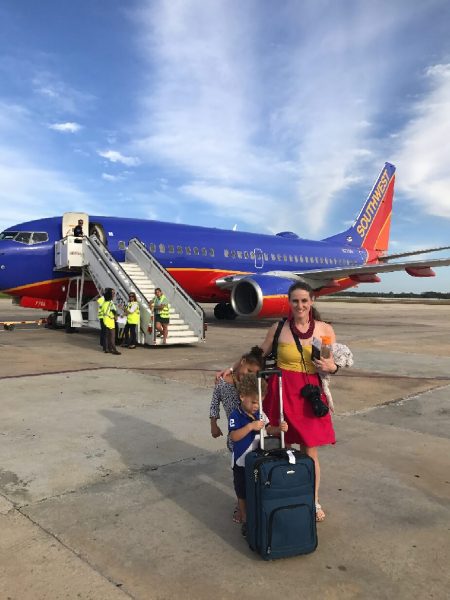
Southwest Airlines flies from the U.S. to Havana and Varadero, Cuba now
2. Bring enough cash with you for your entire trip because everything is paid for in cash there, even hotels. Avoid exchanging the American dollar for Cuban pesos because you will be charged a 10% penalty. Instead, exchange your dollars into Euros or Canadian dollars before your trip and then you can exchange them into Cuban pesos at a bank or exchange office once you arrive.
3. There are two different kinds of currency in Cuba- the Cuban Pesos (CUP) and Cuban Pesos Convertibles (CUC). CUP are for Cubans and CUC are for tourists. One CUC is equivalent to 25 CUP. Don’t get them mixed up, and make sure that when you pay in CUC that your change is given in CUC or else you will be getting ripped off. Most places have their prices listed in CUC, but some are listed only in CUP. If the price seems outrageously expensive, then its likely in CUP. We heard about one guy who paid 80 CUC for a hamburger and a beer because he paid in CUC instead of CUP. His really expensive lunch should have only cost him about 3 CUC (just over $3), but since he didn’t speak any Spanish, he wasn’t able to communicate with the restaurant to realize that the bill was in CUP. Someone got a really nice tip that day! Don’t let this happen to you. Here is a photo of the CUC and CUP below. The peso on top is CUP and the other two are CUC, as you can see “pesos convertibles” written on them. Always check that the word Convertibles is on the Peso, or else it’s a CUP.
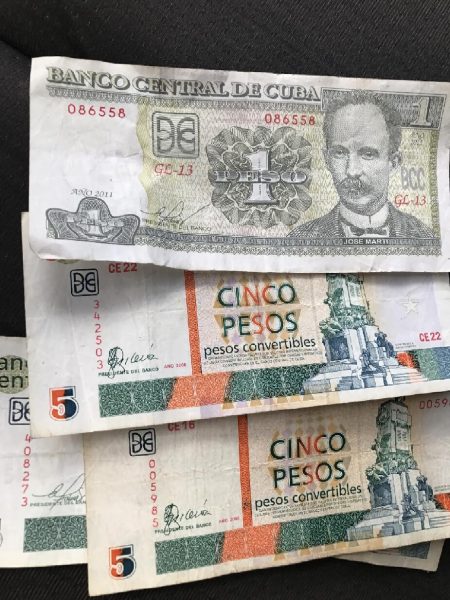
Cuban currency includes two kinds of pesos- CUC for tourists and CUP for Cubans
4. English is not widely spoken in Cuba, so you better brush up on your Spanish before coming to Cuba. Since Americans were prohibited from traveling to Cuba for over half a century, Cubans were not interacting much with people who speak only English. Most of the tourists we encountered in Cuba were from Canada (mostly French speaking Canadians) and Europe, so Cubans have not really needed to speak English for tourism purposes. I imagine that as more Americans begin to travel to Cuba, more locals will learn some English, but don’t bet on it. Thankfully Bertaut speaks enough Spanish to get us by, and since we are both French speakers we could also fall back on that in some circumstances. If you don’t speak any Spanish, bring a Spanish dictionary or a friend who does!
5. Food is really hit or miss in Cuba as some restaurants are run by the government and some are privately owned. The private restaurants are much better, but even then you can walk away from a meal feeling disappointed. Do your research ahead of time – we like TripAdvisor for restaurant recommendations- and then make a reservation. We learned the hard way that the really good restaurants require reservations because they are so darn popular. We were recommended O”Reilly 304 in Old Havana (that’s the name of the restaurant and its address) by a local and when we showed up for lunch, we were turned away. We ended up eating at the restaurant next door because we were starving and the kids were tired and cranky, but the food was just ok and overpriced. We were able to get a reservation for O’Reily 304 the next day and it was fantastic! So if you go to a restaurant and it’s not full or doesn’t require reservations, you have a clue that the food and/or prices aren’t worth it.
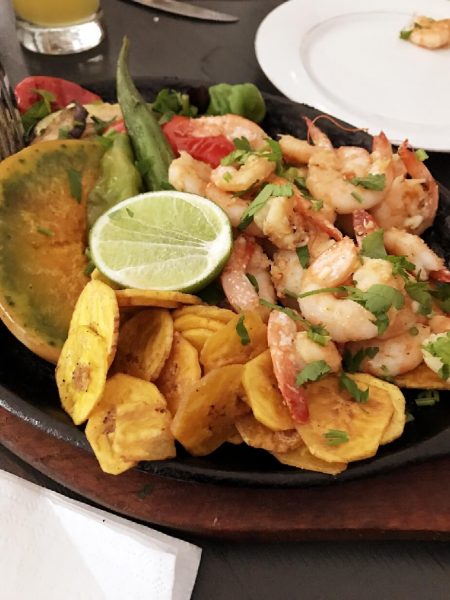
Delicious shrimp, plantains and grilled vegetables at our favorite restaurant in Cuba- O’Reilly 304
6. Prices are negotiable for taxis in Cuba and vary depending on the kind of car. The convertible classics are the most expensive, while the classics with a roof tend to be the cheapest. Modern cars tend to be more expensive too unless they are in poor condition, and then the driver is quicker to drop the price. We were told by our Airbnb owner that we shouldn’t pay more than 10 CUC for a taxi from Vedado to Old Havana. We were quoted 15 CUC on day 1 but by day 3 we didn’t pay more than 5 CUC for the same drive since we had gotten better at negotiating the price. If someone wants more than you are willing to pay, go to the next taxi. They are everywhere in Cuba.
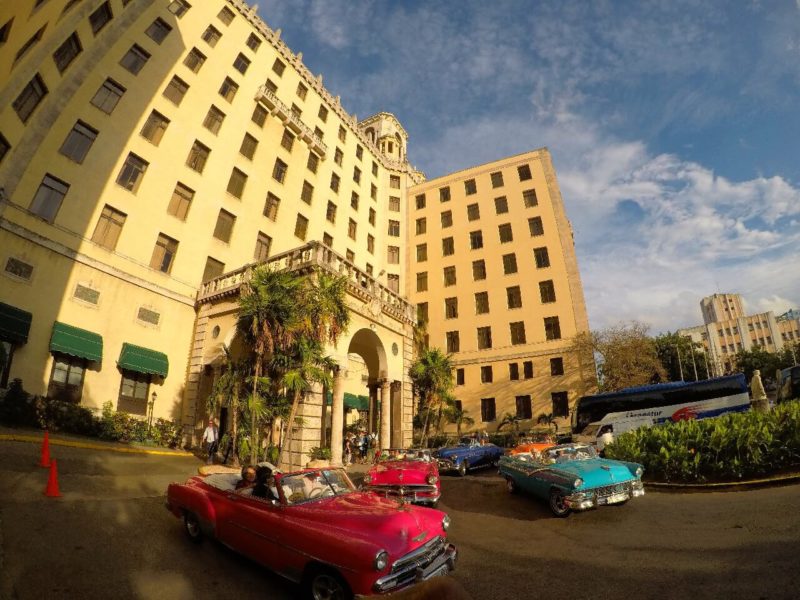
Classic taxis in all colors of the rainbow in front of the iconic Hotel Nacional in Havana
7. Prices for food and drinks also fluctuate A LOT depending on where you go. Most of the restaurants that cater to tourists are overpriced, while those that serve primarily the locals are much cheaper. Remember that the average Cuban state salary is $40 per month, so they cannot afford to go to expensive restaurants. Look for places where the menu is in CUP (local currency) instead of CUC (tourist currency) for a much cheaper meal, and buy street food for a cheap quick meal. For example, we paid 2 CUC for a pina colada at the Fabrica del Arte but at El Floridita, which is overrun with tourists since that was Hemingway’s stomping ground, it costs 6 CUC for a daiquiri (and it was our least favorite daiquiri in Cuba). We really enjoyed searching for the best mojito in Havana, and prices ranged from 2.50 CUC to 6 CUC, although even the most expensive cocktail is still cheaper than we are used to paying in the U.S.
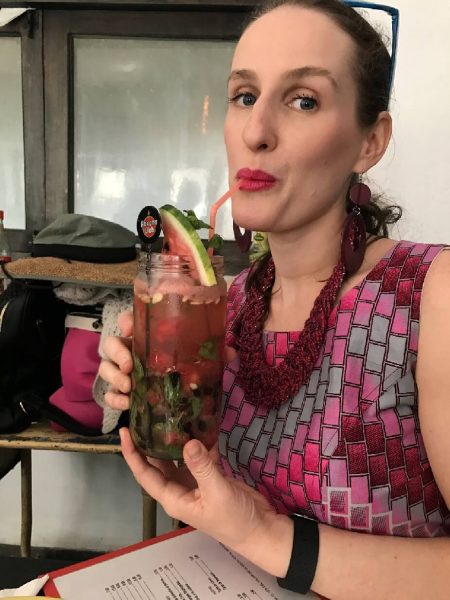
Watermelon Mojito at O’Reilly 304 was the best mojito we had in Cuba
8. Although the cost of living for locals is cheap in Cuba, many of the hotels are ridiculously expensive. Hotel Nacional charges about $500 per night and the Iberostar Parque Central charges $600/night. We like to stay in fancy hotels but don’t like to pay those kinds of prices. Normally we book luxury hotels for free or half price using points, but our options for using points in Cuba were not good. Instead, we used Airbnb to find a great apartment for a fraction of the price of a hotel, which worked out great traveling as a family. An even cheaper option is to stay in a casa particulares for 25 CUC to 45 CUC per night. Just like a bed and breakfast, you are staying in a Cuban’s home and may have to share the bathroom with other guests, so this is not for everyone. A perk of this option is that many are located right in the heart of Old Havana and you can get breakfast for cheap (we paid 5 CUC for a delicious bountiful breakfast at our casa particulares). Check out our post about the best accommodations in Cuba for more information and photos of where we stayed in Havana and Varadero.
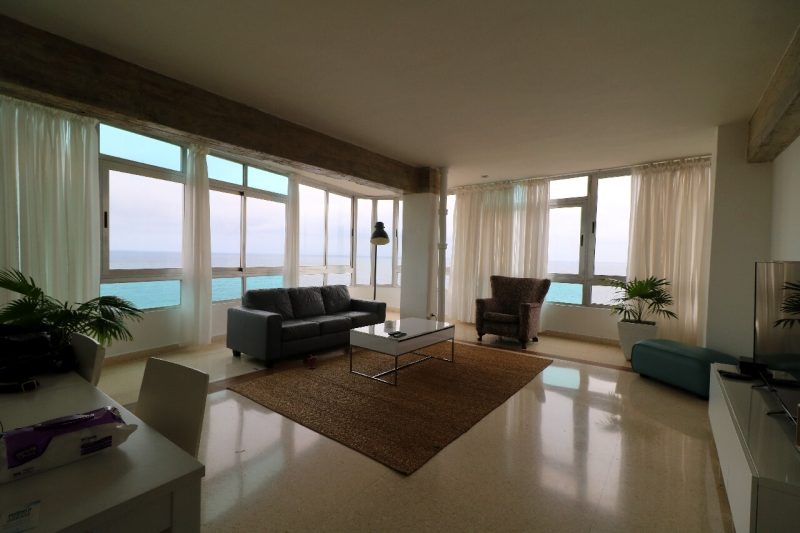
3 bedroom apartment we rented through Airbnb in Havana for $200/night
9. The buildings and plumbing systems in Cuba are very old, so you have to be cautious about what you flush down the toilet. Almost everywhere in Cuba (unless you’re staying at an expensive modern hotel) has signs in the bathroom that you must not flush the toilet paper down the toilet. Even if there is no sign, you should probably err on the side of caution and throw your toilet paper in the waste basket to avoid an embarrassing bathroom situation. I would not want to be the person that overflows the toilet at a casa particulares or at a small mom and pops restaurant.
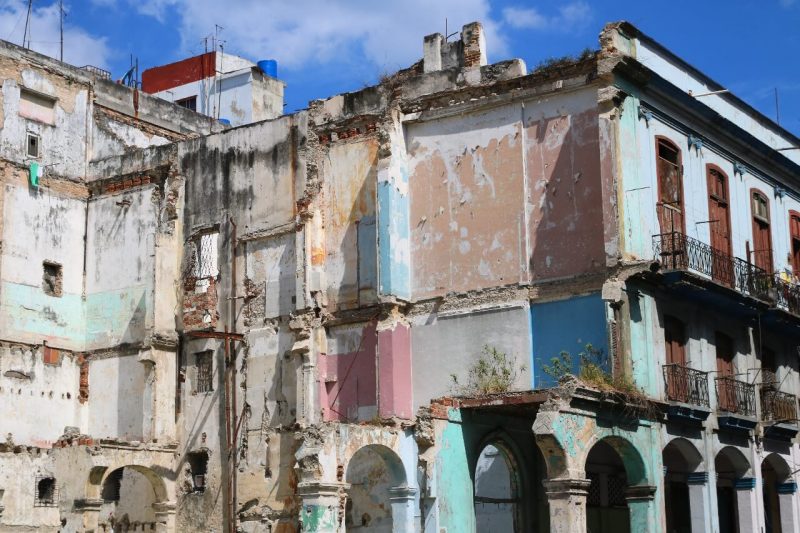
The buildings in Cuba are old and crumbling and have weak plumbing systems
10. Just like in many foreign tropical countries, don’t drink the tap water. We were given this warning by Cuban friends prior to our trip and then were reminded again by our Airbnb owner upon arriving in Cuba. Locals are able to drink it but tourists will get sick from it. Remember to have bottled water for brushing your teeth and keep your mouth shut in the shower! Any Sex and the City movie fans remember when Charlotte shits her pants in Mexico after opening her mouth in the shower? Hahahahaha, don’t let that be you!
11. Don’t buy cigars off the streets- they are fakes! You will likely be propositioned multiple times for Cuban cigars as you walk the streets of Old Havana. They may tell you a story that they know someone who gets them cheap from the factory or steals them from the factory, but this is most likely a lie. Those street cigars are counterfeits. If you want a legitimate Cuban cigar, there are multiple places to buy them and we heard that the prices are consistent in the different tobacco shops around Havana. We bought ours at Hotel Nacional because there was a wonderful lady there who hand rolled them in front of us while explaining the process, which our kids found especially fascinating. The hand rolled cigars don’t come with labels so make sure to keep your receipt to prove they are not illegal if you are questioned by customs upon return to the U.S. If you want cigars with labels, there’s a shop at Hotel Nacional with a large selection of the best Cuban cigars money can buy. They aren’t cheap, just be warned. I had no clue how expensive cigars are since we are not smokers and I’ve never priced them before. Hey, you’re in Cuba, so if you can afford it, then go for it! We did not venture to Vinales but cigars are reportedly much cheaper there since that is where they grow the tobacco.
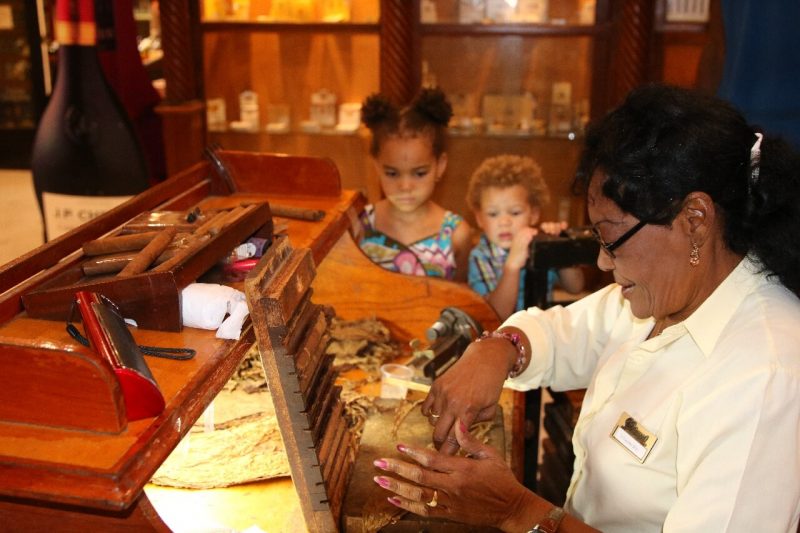
Kids watching as Cuban cigars were hand rolled at Hotel Nacional
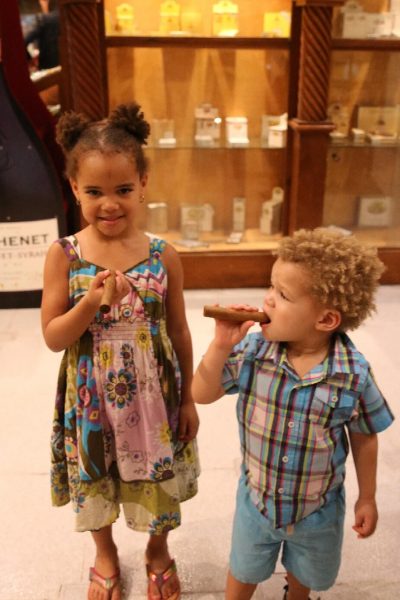
Our 2 year old son thinks he’s the boss holding a Cuban cigar 🙂
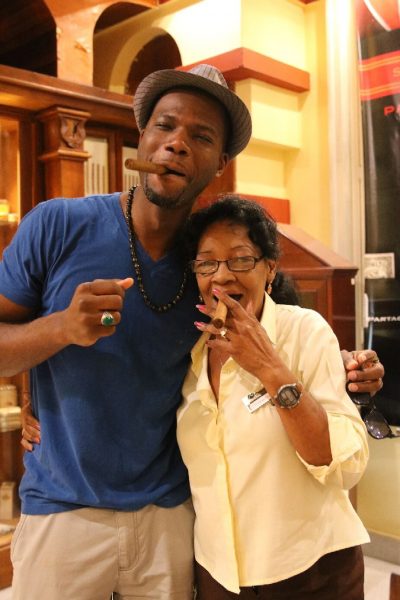
You can’t visit Cuba without trying a Cuban cigar
12. Cuba is kid-friendly so don’t be afraid to pack up your little ones and bring them along for the fun. Just be forewarned, if your kids are still in car seats like ours, you will have to either rent a car or work a little harder to find a taxi that has rear seat belts to install the car seats. We traveled as a family of 5 (our 2 kids plus my mom) so we had to do some research to find a vehicle that could safely transport all of us to Varadero with the kids in car seats. If you call for a taxi, ask for one with rear seat belts, or you can hire a van from the Hotel Nacional which is how we traveled to Varadero. It will cost you more than traveling in one of the old classics (we were quoted only 80 CUC to get there in a 1950’s classic, but we paid 150 CUC to hire the van). Or another option is to take a public bus, but that will take longer and won’t allow you the flexibility to make a stop for the best pina coladas (including virgin ones) in all of Cuba at the lookout point on the way to Varadero.
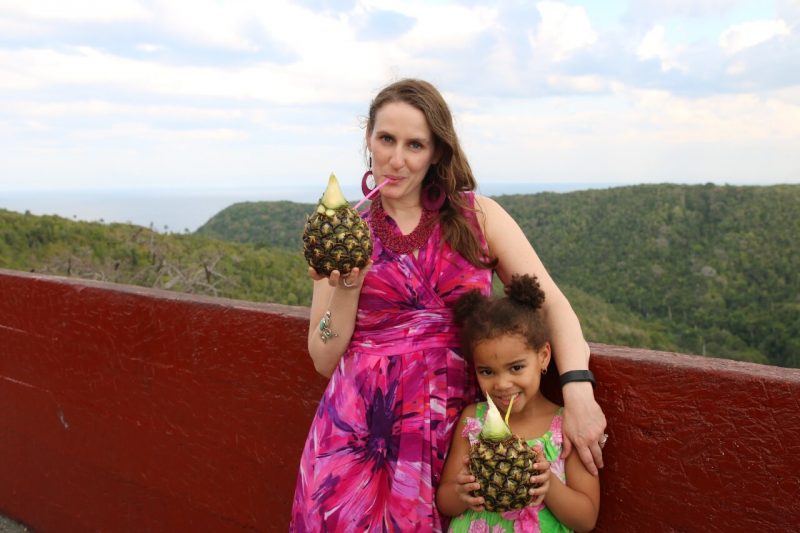
Best pina coladas in Cuba at the lookout point on the way from Havana to Varadero
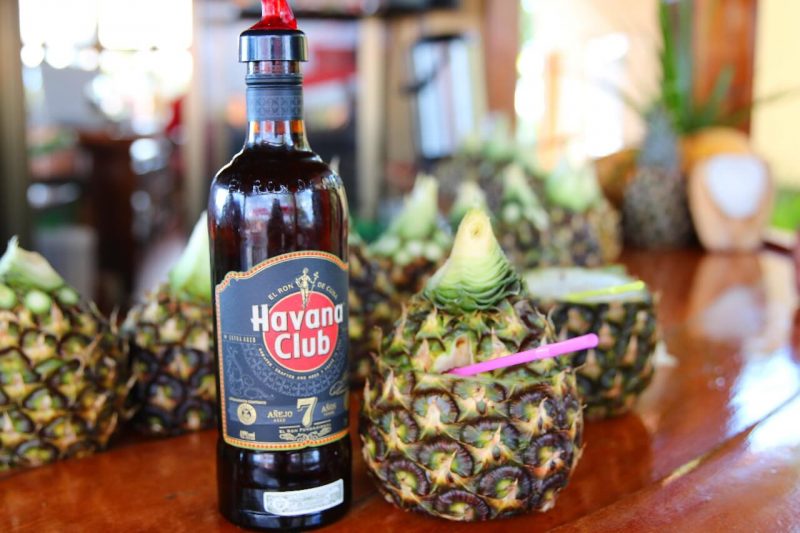
These pina coladas are all natural and are served virgin with a bottle of rum on the counter for you to add as much as you please
We hope our pointers for visiting Cuba is helpful in planning your travels and inspires you to visit this fascinating and vibrant island where you feel like you’ve stepped back in time to the 1950’s. If you love photography like us, you will have so much fun capturing the colorful buildings and classic cars that cruise the streets of Havana. Check out our 25 photos that will inspire you to visit Cuba. If you love music and dancing, you will be on cloud 9 as live salsa music can be heard all throughout Havana any time of day. If you are a history buff, you will enjoy visiting monuments and musuems including the Cuban Missile Crisis exhibit just outside the Hotel Nacional. There’s something for everyone to enjoy in Cuba. Don’t take our word for it, though. Go experience it for yourself! If you liked this post, please sign up for our email newsletter for more travel tips and inspiration to travel the world. Pin this post for later, or share it on social media!

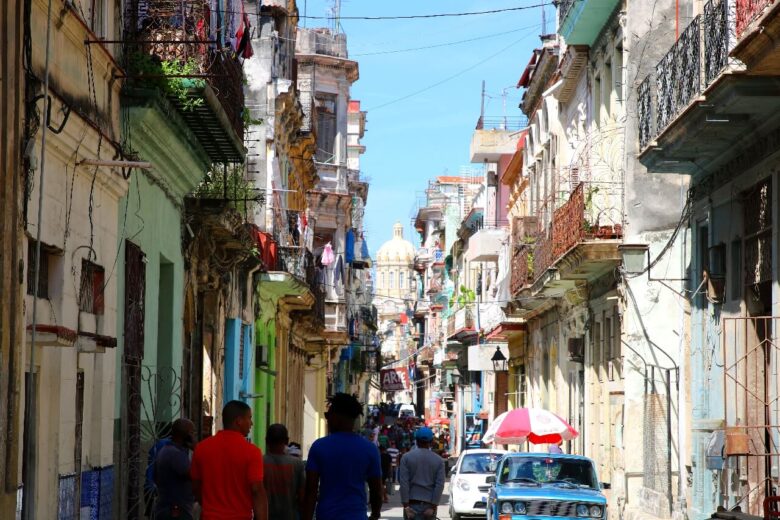
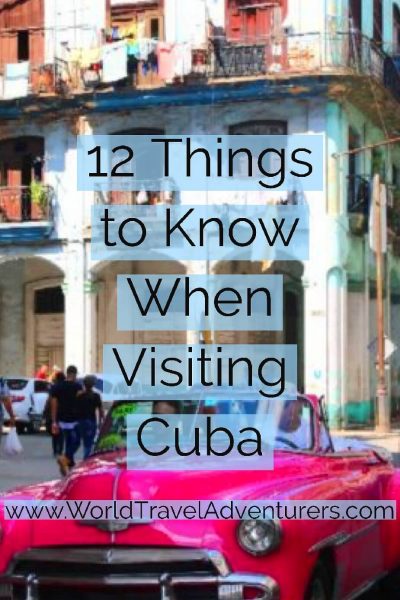
1 comment
Those are some great Cuba tips! Cuba has always appealed to us because of its vibrant colours and historic charm.
Comments are closed.